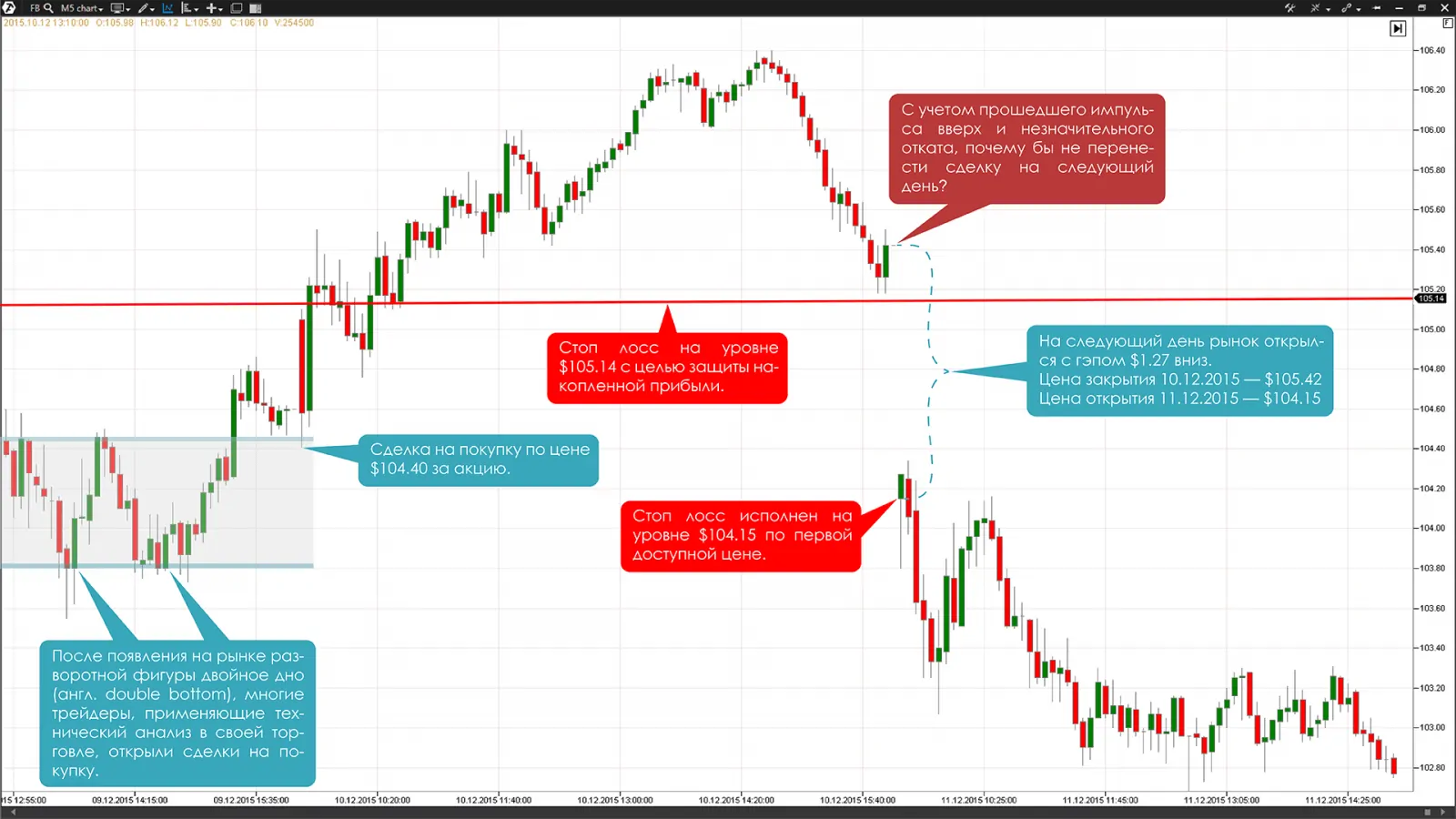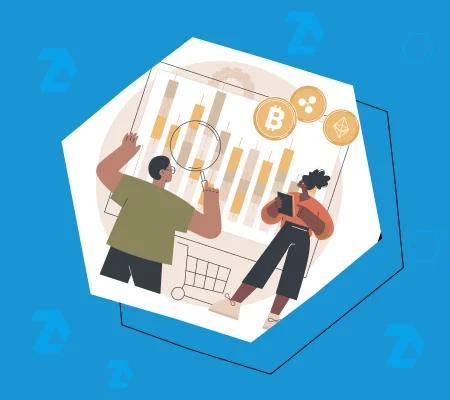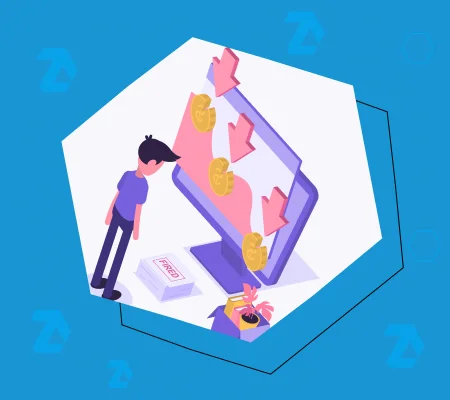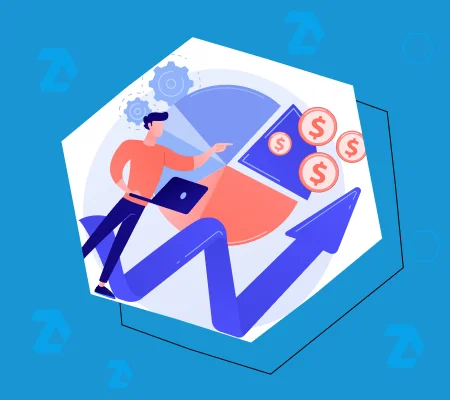5 REASONS WHY YOU SHOULDN’T POSTPONE A TRADE TO THE NEXT DAY
Are you an intraday trader? Have you ever had an idea of postponing your intraday trade to the next day? Despite the fact that many traders and investors postpone trades in the stock market, today we will explain to you why this approach to intraday trading is not the best idea.
In this article:
- Intraday trading
- Why postponing a trade to the next day is an awful idea
- Drawing conclusions
INTRADAY TRADING
What is intraday trading? Intraday trading assumes opening and closing a trade on the same trading day. Since intraday traders should exit open trades before the market is closed, they cannot gain benefit from long-term market movements. Thus, intraday traders rely on leverage, liquidity and possibility to execute a large number of trades during one trading day for accumulation of a significant volume of the annual income.
Despite the fact that the intraday trading is carried out during one day, there are cases when some intraday traders postpone their trades to the next trading day. It is a very risky initiative, since traders cease to control the risks and allow external market factors (economic and corporate news) to decide the fate of their trades. But how can postponing trades to the next day negatively influence your trading?
WHY POSTPONING A TRADE TO THE NEXT DAY IS AN AWFUL IDEA
1. The harm of gaps
If you trade in the stock market, you, most probably, have noticed that, at the moment of its opening, gaps between the closing price of the previous day and opening price of the new day appear in the prices of volatile stocks. The reason could be economic or corporate news, which were issued before the market opening and which positively or negatively influenced the stock price. Let’s check the example below:
The chart of the Facebook stock (ticker: FB) price on December 10, 2015, with 5-minute timeframe
Many traders that apply technical analysis in their trading opened their trades for buying stock of this company after the reversal double bottom pattern appeared in the market. Fortunately, the Facebook stock price started to increase, which testified to the correctness of the decision they made. Later, before the stock market was closed, the price of this stock decreased a bit. In general, there was nothing extraordinary and one could think: “It seems like the stock price will continue its growth. It makes sense to postpone the trade to the next day.”
If you would have behaved this way, you could have put the trade at the unjustified risk of appearance of the morning gap. The morning gap can be both bullish and bearish, that is why the probability of making profit as well as loss, in case of its appearance, is equal to 50%. Let’s check the further development of the situation:
The chart of the Facebook stock (ticker: FB) price on December 10-11, 2015, with 5-minute timeframe. The market opened with a downward gap of USD 1.27
And your reaction, most probably, would have been the following: “Unbelievable! What’s wrong?” Yes, correct, the Facebook stock price fell at the opening of the stock market. In fact, the similar market situations take place every day on all major exchanges without exception. If you want to protect yourself against gaps, the simplest way to do it is not to postpone an open trade to the next day.
2. Your stop loss is useless
The worst thing in postponing a trade to the next day is that a properly posted stop loss is not able to limit losses at an acceptable level if the market opens with a gap against your trade. You might ask: how is it possible? Won’t a stop loss close my loss-making trade when the price reaches its level?
When the market opens the next day with a gap, technically the price skips your stop loss making it useless. As soon as the market opens, the first accessible price activates your stop loss which, in this case, would, most probably, be far from the limits of the affordable risk level.
The chart of the Facebook stock (ticker: FB) price on December 10-11, 2015, with 5-minute timeframe. The stop order was executed at the level of USD 104.15
Let’s assume you posted a stop loss at the level of USD 105.14 but the Facebook stock price skipped it at the moment of opening the stock market having executed your stop order at USD 104.15. And although you believed that you protected the accumulated profit and restricted the risk with the maximum reduction of the price by USD 0.28 (the closing price USD 105.42 minus stop loss USD 105.14 equals USD 0.28) per share at the end of the trading day on December 10, 2015, the actual price reduction at the moment of activation of your stop loss was USD 1.27 per share.
In other words, in the result of the gap you not only failed to protect the accumulated profit but made a loss in the amount of USD 0.25 per share (the trade opening price 104.40 minus actually executed stop loss USD 104.15 equals USD 0.25). If we assess the result of the whole trade, the acceptable price reduction of USD 0.28 increased in the result in 4.5 times (the gap USD 1.27 divided into USD 0.28 equals 4.5 times). Just imagine what could have been with your trading capital if the gap would have been bigger?
If you belong to those traders who open a major trade with a strict small stop loss, such an impact on your trading capital may become a serious obstacle for achieving weekly or monthly income indicators. If you postpone a trade to the next day only from time to time, remember that a stop loss cannot guarantee an affordable restriction of losses in the result of the appearance of a loss-making gap. That is why you have three alternatives:
- Do not postpone a trade to the next day.
- Postpone a trade to the next day taking into account the 50% probability of the gap appearance.
- Hedge a trade with another financial instrument.
It depends on you which one out of these three alternatives to select, however, if you are not 110% sure in the two following ones the safest will be the first alternative.
3. Payment to your broker
Yes, it’s true. Your broker can and will take a commission from you for postponing an open trade to the next day. The size of this commission sometimes may reach several hundreds of basis points. The lower the commission you pay, the higher your profit will be. That is why, if you like your trading idea so much, you can always open a new trade the next morning.
4. The trading capital size
If you plan to postpone an open trade to the next day, you will need a substantial trading capital. Since you plan to stay in the market with the existing gap appearance risk, you need to make sure that the size of your trading capital is sufficient for the open account guarantee collateral and the negative scenario development will not result in the margin call appearance.
A margin call means that the broker starts to sell your asset in order to cover the existing deficit of funds on your trading account. In other words, your trades, which you postponed to the next day, and your free trading capital could be significantly reduced in order to cover potential losses of the broker.
The trading account balance increase can be considered to be the most evident and, perhaps, the only way to protect yourself against an aggressive margin call! However, the money funds, which are on your trading account with the aim to protect yourself from a margin call, do not provide the best profit rate since they are not used in trading.
5. Stress
And what about you personally? Even if you manage to cope with the cunning market and make money on a postponed trade, ask yourself whether this postponing was worth the stress you had in the end. Think about whether you will be able to sleep being agitated by thoughts about the future of the trade. You need to sleep to relax, restore your strengths and psychological energy, which you will need the next trading day.
Ignoring the first four reasons of why you shouldn’t postpone a trade to the next day is able to increase your stress and, consequently, negatively influence your trading efficiency.
Игнорирование же первых четырех причины, по которым вам не следует переносить сделку на следующий день, способно увеличить уровень испытываемого вами стресса, а, следовательно, негативно сказаться на эффективности трейдинга.
DRAWING CONCLUSIONS
Intraday trading is trading the financial instruments during one day.
Intraday trading is a full-time job which requires discipline, consistency and self-confidence.
Intraday traders sometimes postpone open positions to the next day for which they need to take into account external variable factors.
The reasons why you shouldn’t postpone a trade to the next day:
- A serious danger of appearance of a gap at the moment of the market opening the next day.
- A stop loss will not protect you from bigger (than you counted upon when posting it) losses in the event of the gap appearance.
- A broker charges an additional commission for postponing a trade to the next day.
- There is a probability of a margin call if the market opens with a gap.
- Your experience might be insufficient for coping with the market behaviour the next morning.
- You make yourself liable to an additional stress.
- Postponing trades in the stock market is considered to be very risky and only the most experienced traders may do it.
Information in this article cannot be perceived as a call for investing or buying/selling of any asset on the exchange. All situations, discussed in the article, are provided with the purpose of getting acquainted with the functionality and advantages of the ATAS platform.















